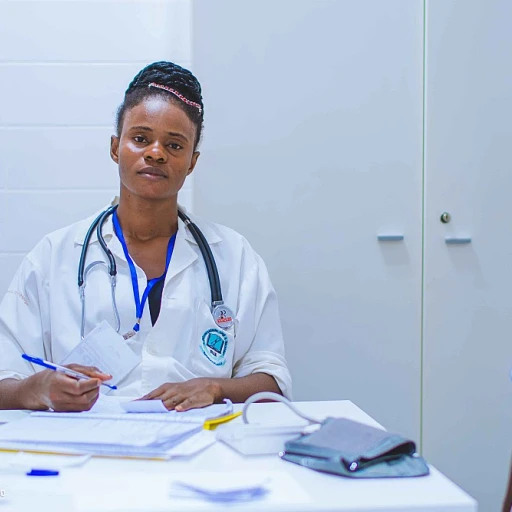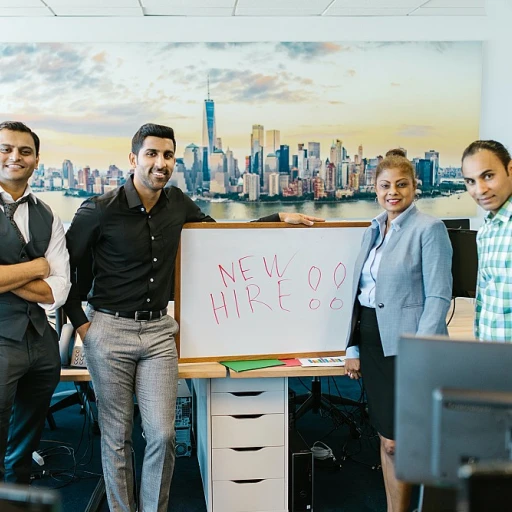Understanding the Forming Stage
Getting Started with Team Dynamics
The initial phase of team development according to the Tuckman model is the forming stage. At this point, team members first come together, often with little clarity on their roles within the group. The focus in this stage is on building a foundation for effective team collaboration and establishing a strong sense of camaraderie.
During the forming stage, enthusiasm and polite behavior typically characterize the interactions between group members. It’s a period marked by a mix of excitement and uncertainty, where teams function as a group but face challenges in organization and task completion. While teamwork is the ultimate goal, team members might feel cautious as they navigate new relationships and dynamics.
In this initial stage, leadership plays a pivotal role in guiding the team. Team leaders need to provide clear direction and establish goals while fostering a supportive environment that encourages open communication. By clearly outlining objectives and maintaining a positive atmosphere, leaders help the team set the stage for future progress through the subsequent stages of storming and norming.
The forming process is not just about getting acquainted; it also involves laying the groundwork for the storming stage. By understanding this, teams can better navigate the natural challenges encountered in group development, such as conflicts and role definitions that arise in the storming phase. With patience and support, teams can transition smoothly into more organized and cohesive units, crucial for entering the norming and performing stages successfully.
Challenges of the Storming Phase
Understanding the Dynamics of the Storming Phase
The storming stage is a crucial part of team development, as outlined by Bruce Tuckman's model. During this phase, team members often experience conflicts and challenges as they adjust to working together. This stage is characterized by competition, disagreements, and tension within the group. It's a natural part of the development process and can help teams grow stronger if navigated effectively.
In the storming stage, team members might struggle with differing opinions, clashing personalities, and varying work styles. These challenges can lead to conflicts, but they also provide an opportunity for growth and understanding. Addressing these issues head-on is essential for moving towards the norming and performing stages.
Common Challenges and Solutions
- Communication Breakdown: Miscommunication is common during this stage. Encouraging open and honest dialogue can help team members express their concerns and work towards solutions.
- Role Confusion: Clarifying roles and responsibilities can prevent misunderstandings and ensure everyone knows their contributions to the project.
- Leadership Struggles: Team leaders play a vital role in guiding the group through the storming phase. Effective leadership can help resolve conflicts and foster a collaborative environment.
- Resistance to Change: Some team members may resist changes in dynamics or processes. Encouraging flexibility and adaptability can ease transitions and promote team cohesion.
For more insights on how to navigate this challenging stage, consider exploring effective team-building activities that can strengthen group dynamics.
As teams work through the storming phase, they lay the groundwork for entering the norming stage, where collaboration and understanding begin to flourish. By addressing the challenges of this stage head-on, teams can build a foundation for long-term success and productivity.
Embracing the Norming Phase
Transitioning to Cohesion in Group Settings
The norming phase of team development is a crucial period where teams begin to function more cohesively as members establish their roles within the group. Understanding the process of transitioning from the storming to the norming stage can help teams solidify their working relationships and enhance overall performance. Team members in the norming stage start agreeing on group values and expectations. They develop more trust and respect for each other, which is essential for the effective team functioning required in future stages. Clear communication patterns and supportive behaviors emerge, allowing team goals to be more aligned with individual priorities. In this stage, group development is marked by constructive communication and collaborative decision-making. Team leaders play a pivotal role by supporting a culture of openness and recognizing individual contributions. As teams embrace the norming phase, they set the groundwork for successful project completion and eventual entry into the performing stage. The shift to this phase doesn't happen overnight. It requires time, patience, and a commitment to continuous improvement. By providing feedback loops and celebrating milestones, team leaders can foster a sense of accomplishment and boost team morale. Engaging in structured methods such as the Six Thinking Hats method can further assist teams in navigating this transformative stage. This technique encourages varied perspectives, helping teams refine their strategies and develop more innovative solutions. Ultimately, the norming phase is about refining interpersonal dynamics and optimizing the synergy among team members. Through consistent effort and supportive leadership, teams can successfully overcome the turbulence of the forming storming stages, paving the way toward higher performance and efficiency.Strategies for Smooth Transitions
Strategies for Seamless Progression through the Team Development Stages
Transitioning from one stage to another in team development can be a challenging endeavor, filled with both opportunities and potential obstacles. However, with appropriate strategies, teams can navigate these phases more effectively and contribute to successful outcomes. To ensure smooth transitions from forming through storming and into the norming phase, leaders and team members can implement the following measures:- Foster Open Communication: Encourage an environment where team members feel comfortable sharing their thoughts and ideas. Open dialogue not only helps to resolve conflicts during the storming stage but also builds trust among team members.
- Establish Clear Roles and Responsibilities: During the forming stage, clarify each member's role in the project. This clarity reduces misunderstandings and provides a foundation for accountability as the team progresses.
- Encourage Collaboration and Inclusivity: Promote collaboration by actively emphasizing the importance of everyone's input in achieving the common goal. This helps in cultivating a sense of belonging during the norming stage.
- Set Achievable Goals: Develop SMART (Specific, Measurable, Achievable, Relevant, Time-bound) goals. By setting clear objectives, teams can better direct their efforts and track their progress through the development stages.
- Adapt Leadership Styles: Leadership plays a pivotal role in guiding teams through these phases. Adjust your leadership approach to meet the needs of the team at different stages, such as being more directive during forming and more facilitative during norming.
- Regular Check-ins: Schedule regular check-ins to discuss progress, address concerns, and refocus efforts. These meetings are vital in facilitating open communication and ensuring everyone remains aligned.
The Role of Leadership in Team Development
Empowering Leadership in the Development Journey
Effective leadership stands as a key pillar in guiding teams through the various stages of development. Understanding the dynamics of each stage, such as forming, storming, and norming, is only part of the solution. Leaders are tasked with inspiring, directing, and supporting the team to foster a seamless transition into the performing stage. In the forming stage, leaders should act as guides, helping team members understand their roles and responsibilities. Establishing clear expectations and facilitating open communication can lay a strong foundation for effective team development. As teams enter the storming stage, leaders should be prepared to navigate conflict and encourage positive dialogue. By leveraging the conflict as a chance for growth, they help team members move past personal differences and align on group objectives. Once teams reach the norming phase, leaders must sustain the momentum by nurturing team collaboration and cohesion. Celebrating small victories and recognizing achievements can bolster team morale and commitment to collective goals. Leadership isn't just about managing the present; it’s about forward-thinking. Preparing team members for future challenges and equipping them with the skills needed for the performing stage cultivates an environment of trust and opportunity. Furthermore, the Tuckman model provides a framework that leaders can use to identify the current stage of team development. This understanding can enhance their ability to anticipate challenges and deploy effective strategies to drive project success. Ultimately, the journey through the stages of team development is a shared responsibility. Each member plays a crucial role, but leaders are instrumental in ensuring the team reaches its full potential, paving the way for sustained success.Measuring Success in Team Development
Assessing Team Development Outcomes
Understanding how to measure success in team development involves looking at several critical aspects. Notably, the stages outlined by the Tuckman model—forming, storming, norming, and performing—serve as benchmarks to gauge progress.- Performance Metrics: Evaluate whether the team can deliver on their project goals. The performing stage typically indicates high efficiency and achievement.
- Group Dynamics: Observe communication flow and collaboration during the norming stage. Effective teams demonstrate strong inter-member trust and cohesion.
- Change Adaptation: Examine how smoothly the team moves through each stage. The transition from storming to norming reflects crucial adaptation skills, with less friction suggesting a successful shift.
- Team Member Satisfaction: Assess individual engagement and morale. Member satisfaction typically rises as the group progresses through the development process, particularly in the later phases.
- Leadership Influence: Determine the impact of leadership on team dynamics. Effective leadership plays a pivotal role in guiding teams through the phases and stabilizing group dynamics.












